D.C. Circuit Review—Reviewed: When Does a Rule Become a Rule?
The D.C. Circuit has once again addressed the surprisingly vexing question of when a rule becomes a rule. National Council of Agricultural Employers v. Department of Labor involves two competing rules modifying the H-2A farmworker visa program. The Trump administration’s Department of Labor submitted a final rule to the Office of the Federal Register (OFR) on January 11, 2021. The Biden administration’s Department of Labor (DOL) withdrew the rule before publication and promulgated a different rule in 2022. A trade group challenged the 2022 rule on the ground that it had been promulgated without a new notice and further comment. The D.C. Circuit disagreed and held that the 2021 action never became final because OFR never made it available for public inspection.
The Administrative Procedure Act defines a rule as “an agency statement of general or particular applicability and future effect designed to implement, interpret, or prescribe law or policy.” And the Freedom of Information Act requires an agency to “publish in the Federal Register . . . substantive rules of general applicability adopted as authorized by law.” The D.C. Circuit has interpreted those statutes to mean that a rule is final for APA purposes when it is “duly fixed.” The D.C. Circuit has also explained that “[p]ublic inspection ordinarily denotes the time when a rule is authoritatively established.” That is because a rule placed on public inspection may not be withdrawn “without explanation or notice,” but a rule that has not been placed on public inspection “is unenforceable and may be withdrawn at will.”
Because the Trump administration did not place the rule on public inspection (and did not invoke the “good cause” exception), the 2021 action never became a final rule. By extension, the Biden administration was not required to go through notice and comment again. (The parties agreed that the 2022 rule was a “logical outgrowth” of the original notice of proposed rulemaking.)
The D.C. Circuit was not finished. At a high level of generality, the question of when a rule becomes a rule occurs in a variety of contexts with different tests. The court accordingly distinguished cases involving “violations of unpublished regulations in effect at the time the offense was committed, “the timeliness of a petition under statutory review provisions,” and a case interpreting the word “promulgation.” The court also observed that several features of the 2021 action supported drawing the line at public inspection. Although the Trump DOL posted the rule on its website and characterized it as a final rule, the text included a placeholder for OFR to set the effective date based on publication. (That practice is typical, and it reflects the variable timing of OFR publication.) The posted rule also included a disclaimer that it was unofficial.
The test applied by the court makes sense. As noted, it promotes certainty for regulated parties and agencies. It also allows for the correction of minor errors during OFR processing. And it reflects the general understanding that a rule is not “final” until published in the Federal Register. But the stakes of midnight rulemaking are high, so it will be interesting to see what the D.C. Circuit does if a future administration says on the face of a rule release that it is official and sets an effective date on its own.
The D.C. Circuit also decided four other administrative law cases this week:
In In re: United States of America, a divided panel issued writs of mandamus and prohibition to the military court trying Khalid Sheikh Mohammad and two other 9/11 conspirators. The defendants agreed to plead guilty in exchange for the government not seeking the death penalty. Then-Secretary of Defense Lloyd Austin withdrew from the plea agreements, but not before the defendants had remained silent during a hearing on a co-defendant’s suppression motion. The military court concluded that the Secretary lacked authority to withdraw. In the majority opinion, Judges Millett and Rao held that the Secretary had authority to withdraw from the agreements; no performance of promises had begun under the agreements; the government had no adequate alternative remedy (as required for mandamus and prohibition); and the equities favored issuance of the writs. In partial dissent, Judge Wilkins would have denied the writs on the ground that the defendants began to perform. The case features an interesting dispute over the standard of review. It also provides a helpful reminder that mandamus “compels action not being taken”; prohibition “orders a halt to action”; and, in the D.C. Circuit, “a petitioner need not precisely distinguish which writ he seeks.”
In Kennedy v. Commissioner of Internal Revenue, the court held that the Tax Court lacked jurisdiction to review the IRS’s denial of several whistleblower claims. The IRS sent the claims to an operating division, which took no action. The D.C. Circuit reasoned that those denials were more like a claim rejected without being forwarded to an operating division (unreviewable) than a claim that triggered an audit before being denied (reviewable).
In Paragould Light & Water Commission v. FERC, the court denied a petition for review of FERC’s approval of costs imposed by the system operator of a regional zone of transmission facilities. The zone sought to expand and spread the costs on the entire zone, even though some customers arguably would not benefit. The court upheld FERC’s discretion to analyze costs and benefits at the zonal level and its reliance on unquantifiable systemwide benefits.
Finally, in Energy Harbor, LLC v. FERC, the court denied a petition for review of $12 million in penalties imposed by PJM Interconnection on Energy Harbor for the latter’s failure to comply with a tariff during a winter storm.



